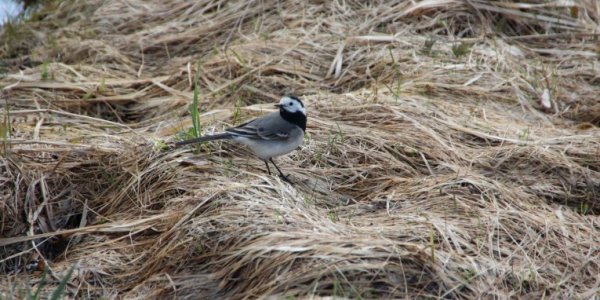The raven - so black and so playful!
Winter is a time of survival for those animals that have not gone to warmer places. The short days, frost and deep snow - it is a tense and nervous time for searching feed. Also ravens, which are among the largest and darkest birds in Latvia, have established a mutually beneficial co-operation with the wolves in search of feed: where there are voices of ravens - there will be game, and where there are predators' teeth - there is an easier access to food.
Raven's menu
The raven is a relatively large animal that has to be satiated to withstand the cold winter nights - it needs at least 200 grams of meat daily. With accumulated nutrients, ravens can survive for up to three days without food. Ravens find feed, flying over forests, carefully searching over every single square metre of their territory. In Latvia, the territory of a raven couple reaches to about 15 square metres.
In winter, waste dumps turn into the most significant raven "canteens"; large animal carcasses or their residues make up a large part of the raven's nutrition in the cold season. To have the dead animal properly served, ravens proudly inform the strong predators of the found food. Teeth of such predatory animals as wolves and foxes help the black birds have access to a meal, since on their own ravens cannot tear the skin of the large bi-ungulates. Such co-operation is mutually very beneficial. The raven is one of the largest passerines.
Endowed with a sharp mind, the bird is able to successfully adapt to different conditions. Ravens have a varied menu, which is affected by both their place of residence and the season. Ravens are a threat to the small songbirds and other passerine birds.
The mixed company of passerines
The sparrow is a passerine, but not all passerines are sparrows. The passerine order consists of many different birds: wagtails, common starlings, all species of common blackbird, larks, tits. The majority of the passerine species nesting in Latvia are migratory birds; therefore during the winter season their representatives move to warmer countries, while resident birds like all corvids, including ravens, are faithfully waiting for spring together with us here in Latvia.
The passerines are also represented by the penduline tit, long-tailed tit, emberiza, butcher-bird, bullfinch, hawfinch, finch, greenfinch, nuthatch, flycatchers, redstart, swallow, martin, hedge-sparrow, warbler. However, not to get confused with all of these birds, it should be remembered that the well-known house sparrows and Eurasian tree sparrows as already revealed by the name of the order, also belong to the passerines.
And this is done wisely
Raven's brain is one of the largest among all the birds. They are characterised by the ability to deal with unusual situations, the ability to mimic and analyse what is happening. And besides, the raven has an amazing ability to adapt to different situations in life and to find a way, how to gain benefit.
Several thousands of raven couples nest in Latvia. They start nesting very early every year - already in late winter. For their mating dance, the black birds make very unusual acrobatic tricks in the flight. There are reasons for why ravens are often story and fairy tale characters - they are smart, quick-witted, able to work in a team. When they are not nesting, ravens concentrate in larger groups or even flocks. There is always a bird chosen from the flock that would keep watch over their place of stay.
Games that ravens like to play
Although ravens are shown in Latvian proverbs and sayings as black and menacing characters, sometimes these birds want to have some fun. After a meal, ravens like to roll in the snow, they love to play, for example, to roll from side to side or down a slope with a cone or twig between their fingers. Different playful elements and acrobatic tricks are also performed in flight; birds like to race one after the other or simulate different flying techniques.





















